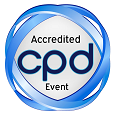
Nene Meltem KEKLÄ°K
Cumhuriyet University, Turkey
Title: Modeling the Inactivation of Escherichia coli O157:H7 on Turkish Style Sausage (Sucuk) Exposed to Pulsed UV Light
Biography
Biography: Nene Meltem KEKLÄ°K
Abstract
Escherichia coli O157:H7, an enterohaemorrhagic E. coli (EHEC), is a highly pathogenic microorganism, which causes hemorrhagic colitis and hemolytic uremic syndrome in infected humans. Ruminants, especially cattle, are known to be a major reservoir of EHEC. A substantial number of foodborne disease outbreaks related to E. coli O157:H7 has been associated with the consumption of meat products contaminated due to improper processing and handling of meat. Pulsed UV light (PUV) is a potential technology for the post-processing surface decontamination of meat products. PUV does not involve chemicals, water, ionizing radiation or heat (for short treatment times), and can be applied to food with or without package. Although the inactivation kinetics of microorganisms using PUV has been studied by a number of researchers, the information in this area is still limited. Accurate estimation of microbial survival rates by using mathematical models would help successful adaptation of this technology to industrial applications.
In this study, the inactivation kinetics of Escherichia coli O157:H7 on sucuk, a Turkish style dry-fermented sausage made from raw minced beef, was investigated. E. coli O157:H7 inoculated onto the surface of sucuk encased in collagen was exposed to pulsed UV light for up to 60 seconds at varying distances (5, 8 and 13 cm) from the quartz window of the xenon lamp in a pulsed UV-light system. The survival curve obtained at each distance exhibited an upward concavity. Accordingly, three mathematical models, log-logistic, modified Gompertz, and Weibull, were used to estimate the inactivation rates. Non-linear regression was performed to determine the model parameters. The goodness-of-fit of models was determined using root mean square error (RMSE), accuracy factor (Af), and regression coefficient (R2). Modified Gompertz model yielded the highest goodness-of-fit followed by log-logistic model and Weibull model, respectively. Modified Gompertz model produced RMSE values of 0,304-0,464, Af values of 0,937-0,985, and R2 values of 0,969- 0,981. The findings of this study demonstrated that the inactivation of E. coli O157:H7 on sucuk encased in collagen exposed to PUV follows a non-linear (upward concave) pattern and can be predicted using modified Gompertz model.

